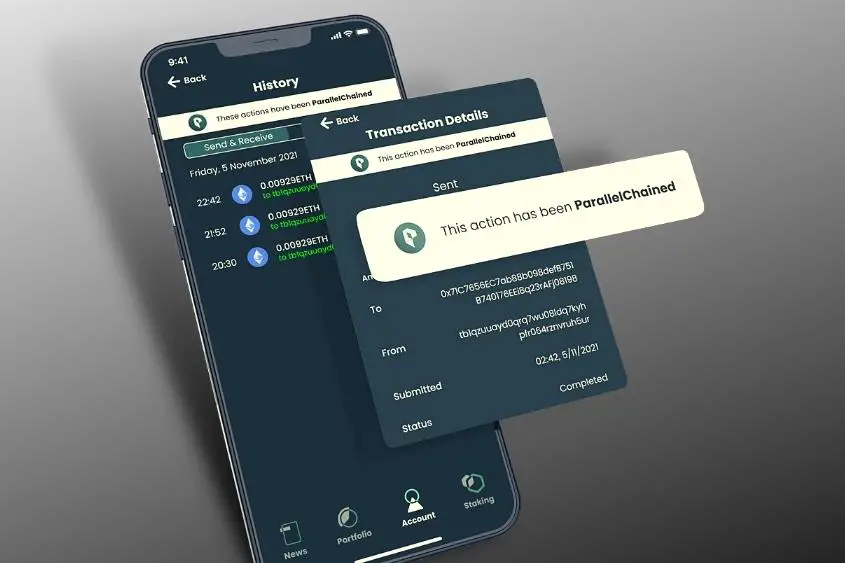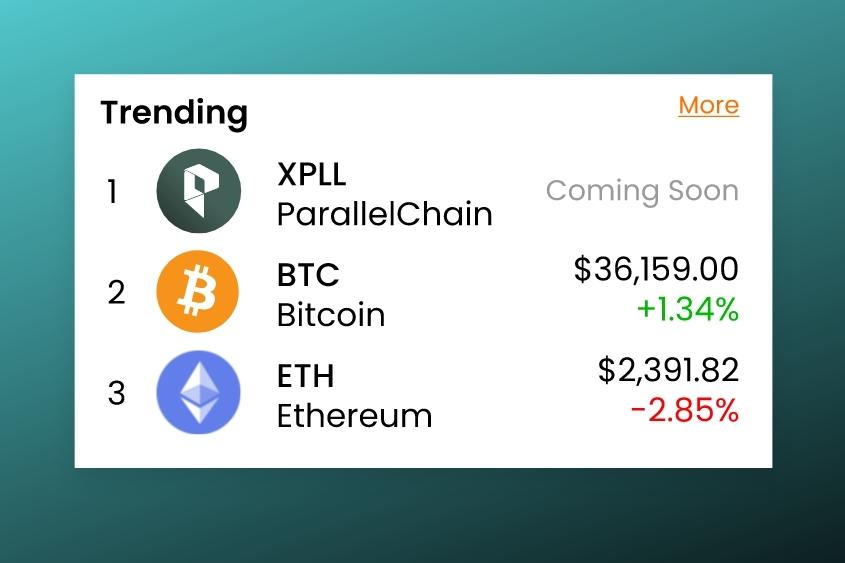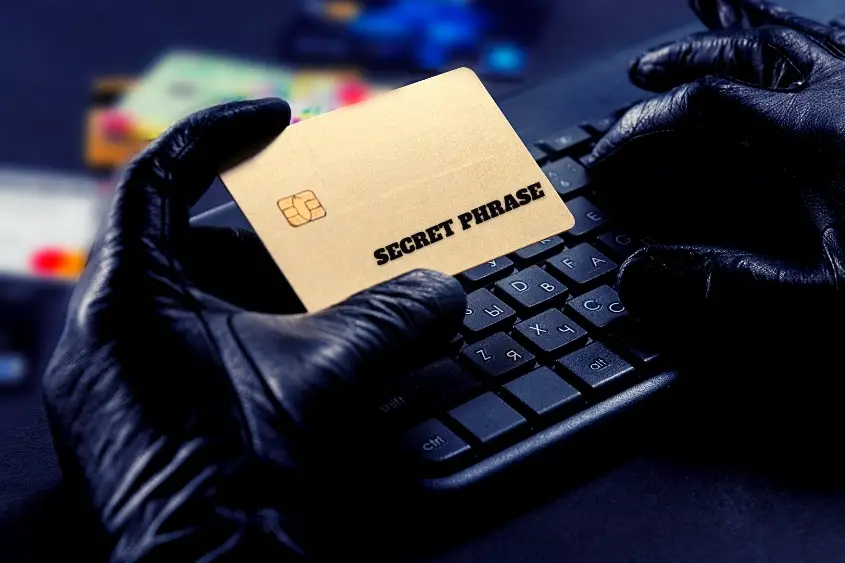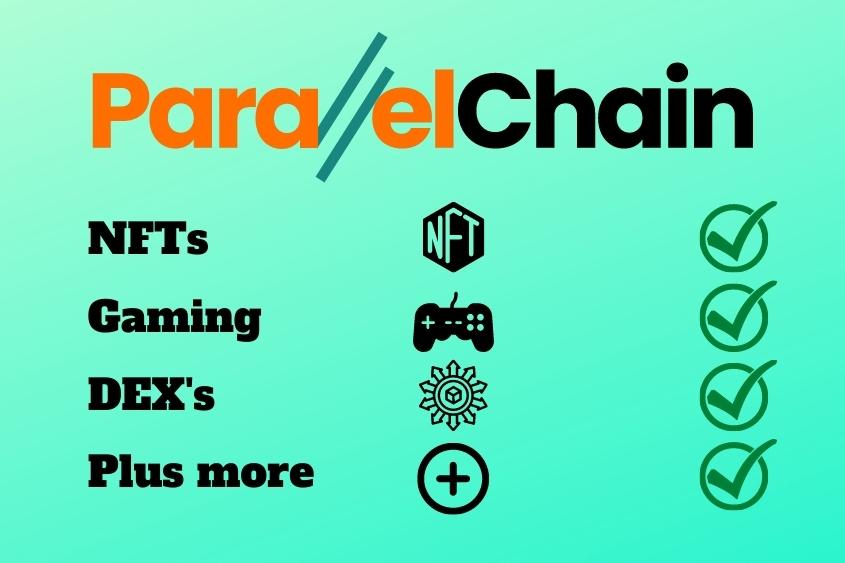If you are an active participant in the Web3 space, then you are likely familiar with crypto wallets. They’re used to buy, sell, and store cryptocurrencies and NFTs. To access these wallets, you need a secret phrase. If you forget your phrase, however, you lose all access to your wallet. That’s why ParallelWallet aims to change the way we access wallets.
ParallelWallet is a Web3 wallet mobile app secured by multi-biometric authentication. Users create a unique bio-key (with a combination of their face, palm, and voice biometrics) for authentication and account recovery, addressing the issue of lost or stolen private keys in the Web3 space.
There is a lot that goes into understanding the current issues with wallets and how ParallelWallet aims to change the way we access our digital assets. This article will break it all down for you.
What Is ParallelWallet?
ParallelWallet is a Web3 wallet created by ParallelChain Lab that utilizes artificial technologies to allow users access to their digital assets. That means there’s no 12 – 24 word phrase required. Instead, the only way to access your wallet is by using a combination of biometric authentication software.

Ian Huang, Founder, and CEO of ParallelChain Lab expressed his vision for the wallet, saying:
“Imagine a world where customers can take their real-world purchases into the Web 3.0. What we are talking about is the possibility of building a Metaverse that works as smoothly as the real world and, as an example, loyalty points can be converted into digital rewards. ParallelWallet provides a secure safeguard for transactions on the blockchain platform, which is truly a blockchain in your pocket!”
Beyond being the first multi-biometric crypto wallet, ParallelWallet has several other notable features as well.
Sole Ownership of User Data
ParallelChain Lab doesn’t have access to your wallet and doesn’t perform any data management in this regard either. Users remain in full control of their wallets and have sole ownership over their data which is stored in a non-readable format on their personal ParallelChain blockchain.
Implementation of Personal Blockchain

When you create your ParallelWallet, your own personal ParallelChain is automatically created to power your account.
The personal blockchain implementation provides you with unique privacy and security capabilities so that you can monitor and track your account activities.
Monitor Live ParallelChain Activities
Since ParallelWallet is native to the ParallelChain blockchain, you have the ability to view the live status of the mainnet, track the performance of XPLL, view transactions, and even manage XPLL staking through the app.

In addition to XPLLs and other ParallelChain-standard tokens and NFTs, ParallelWallet will also support BTC, ETH, and a range of ERC-20 tokens—the standard for creating and issuing smart contracts on the Ethereum blockchain.
What Is the ParallelWallet Beta Phase?
Before ParallelWallet is available to everyone, it’s only available to IOS users first, and will later be rolled out for Android users.

To ensure that the core functionalities of the app are operating properly and to receive essential feedback, 50 select participants will be chosen to test the wallet.
Core functionalities to be tested in the Beta Phase include:
- Multi-Biometric authentication.
- Send and receive testnet BTC, testnet ETH, testnet USDT, and testnet USDC. (DO NOT use real tokens in the Beta app, this will result in your tokens being permanently lost.)
- ParallelChain activity logs.
- Live token price charts and market data.
- Account privacy mode.
Though registration for the beta phase ends on June 5, 2022, at 5 pm UTC, the 50 chosen participants will be rewarded with ParallelChain tokens (XPLL) upon providing high-quality, constructive feedback.
Current Web3 Wallet Issues
A Web3 wallet is meant to provide users with a secure and user-friendly application for storing and managing all of your Web3 digital assets. With the large amounts of money being transacted in the Web3 space, security is more important than ever.

Since many of these wallets are decentralized—meaning they aren’t controlled by a central authority—companies like Metamask and Rainbow Wallet leave it up to their users to keep track of their login credentials rightfully so.
With that comes many responsibilities. I can’t count the number of times I have lost or forgotten my password for my online accounts, leading me to smash the “Forgot Password” button.
But in the decentralized world of Web3, there’s no “Forgot Secret Phrase” button. That leads us to our first issue with current Web3 wallets.
There’s No “Forgot Secret Phrase” Button
If you forget your phrase, it’s game over. Not only do you lose access to your wallet, but you also lose everything inside your wallet. Whether that be $1 or $1 million, it’s all at the mercy of your secret phrase. That’s a big problem!

I get it. The secret phrase exists to enforce security. But we have to understand that as humans, we are forgetful, and we often misplace things. Or worse, we mistakenly throw things away without realizing we just threw away our entire retirement plan.
That’s why ParallelWallet utilizes AI biometric technology. Our password is our body, which means we’ve always got it on us and it’s nearly impossible for someone else to steal. This leads me to the next issue.
Your Secret Phrase Can Be Stolen
When it comes to wallet security, a secret phrase actually does a really good job at keeping other people out of our wallets.

That is until someone gets a hold of our secret phrase. It happens all the time. If you store your secret phrase on your device or somewhere online, you are at high risk of having your secret phrase compromised.
And once someone gets a hold of your seed phrase, they have complete control over your wallet and your assets.
That means they can change your password, and easily transfer all of your assets to their own wallet so that they can take their sweet time selling them off to make a nice profit.
So what’s the solution? I’ll give you a hint. It begins with Parallel and ends with Wallet. You guessed it! ParallelWallet.
Since ParallelWallet is only accessible via biometric technology, only the user who created the wallet has the ability to access it.
And let’s be honest, although it’s possible that someone could use your face, palm, and voice to access your wallet, it’d be nearly impossible for a hacker to gain access to all of that.

Plus, the incorporation of anti-spoofing technology protects the biometric systems from hackers by ensuring the presence of a real person and not just a presentation, such as an image of someone’s face or a recording of their voice.
In reality, for someone to gain access to your wallet, they would need you to be physically present and willing to go through the biometric steps required to access your wallet.
You Have to Find A Secure Place to Store Your Secret Phrase
Even if a secret phrase is properly used to secure your wallet, you still have to find a proper place to store it.
Some of the most common methods for storing your seed phrase include writing it down on a piece of paper, using a password manager, or simply allowing a centralized exchange like Coinbase to hold your digital assets for you. However, all of these methods have their fair share of cons.
When storing your secret phrase on paper, the risks go without saying. But for the sake of informing others, allow me to elaborate. You could lose the piece of paper, spill a drink on it, or it could be destroyed in various other ways.
Storing your phrase in a password manager is also risky. If the software crashes, you could lose all of the data stored in it. Moreover, centralized software is easier for hackers to gain access to.
Though centralized exchanges don’t require you to store a seed phrase and they do offer password recovery solutions, they are still centralized exchanges.
Centralized exchanges leave you without direct ownership of your funds and are also more likely to be hacked, such as when 6,000 Coinbase users had their funds stolen.
However, with the multi-biometric functionalities utilized in the ParallelWallet, you don’t need to worry about where you are going to store your secret phrase. You are the secret phrase!
What Is the ParallelChain Blockchain?
ParallelChain is one of the fastest, most scalable, and most secure blockchain networks consisting of two layer-1 platforms. The mainnet layer is capable of 80,000 transactions per second (TPS), and the private layer can achieve 120,000 TPS. Both layers are interoperable at the protocol level.

Interoperability is achieved through a secure and private channel called Inter-ParallelChain Communication (IPC). The IPC channel serves two purposes in ParallelChain.
- It provides an interface between the metaverse and the real world by allowing applications to operate across public and private layers.
- It allows networks on the private layer to utilize the mainnet consensus mechanism and its enhanced security while preserving their privacy and autonomy.
Another feature of the IPC-powered consensus is the Inter-Parallel Proof-of-Immutability (IPPoIM)—an auditing function that’s designed to remove the trust barrier between users of a private network by allowing them to verify the network’s tamper-proofness without the need to access on-chain data.
ParallelChain Mainnet Use Cases
The mainnet offers users many use cases. Let’s take a look at some of these use cases offered through the ParallelChain mainnet.

NFTs
ParallelChain is both WebAssembly (WASM) and Ethereum Virtual Machine (EVM) compatible. That means it has the capability to power the most competitive NFT platforms that allow users to mint and trade NFTs for an extremely low fee.
Gaming
Scalability and efficiency are essential when it comes to gaming. ParallelChain enables you to run simple and advanced games without lag. Being that it is a high-performance smart contract platform, it can easily process complex logic and GameFi tokenomics.
DEXs
ParallelChain also provides flexible smart contract deployment to support various types of decentralized exchange (DEX) protocols. It supports both Automated Market Maker (AMM) and orderbook-based protocols that are commonly used in the development of DEX’s.
Other
Ultimately, ParallelChain is on a mission to make blockchain technology more accessible, secure, and scalable for all types of businesses and consumers. The use-cases are endless and only limited by your imagination.
ParallelChain was designed not just to handle all of the blockchain’s pain points, but also to fulfill a wide range of demands and real-world applications, from finance to cryptocurrencies and everything in between.
What Is the XPLL Token?
XPLL is the utility and governance token that drives the ParallelChain blockchain. It can be used to pay transaction fees, for network administration, proposal creation, voting, and to conduct node validation and authorization. You can also use the tokens to swap software licenses on the ParallelChain network.

Below is a breakdown of the XPLL tokenomics:
Tokenomics
Token Name: ParallelChain
Ticker: XPLL
Token standard: Network Native
Contract: updating
Token type: Utility, Governance.
Total Supply: 250,000,000
Token Distribution
Seeds: 4%
Public: 3%
Node: 37%
Development Grant: 20%
Strategic partners: 5%
Team: 12%
Ecosystem: 12%
Liquidity & Listing: 5%
Advisor: 2%
All of these features of the ParallelChain Blockchain and XPLL can be accessed by using the ParallelWallet.
Overall, ParallelWallet is the first of its kind multi-biometric wallet mobile application. You can easily create your own unique bio-key (with a combination of face, palm, and voice biometrics) for authentication and account recovery without the need to store a 12 – 24 word secret phrase.
To stay up to date with their latest wallet and blockchain progression, make sure to follow ParallelChain on Twitter.
